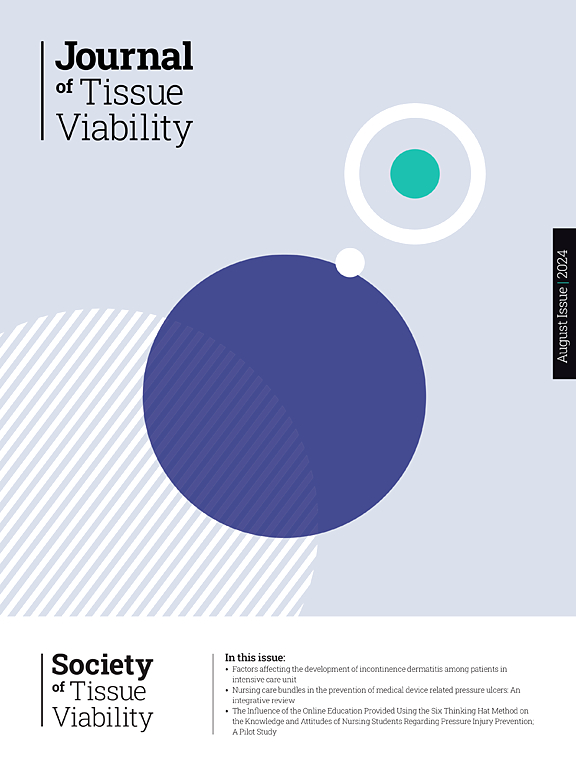A new conceptual model for how pressure ulcer risk is negotiated and adherence to preventative advice in the community setting
IF 2.4
3区 医学
Q2 DERMATOLOGY
引用次数: 0
Abstract
Aim(s)
To identify potential factors affecting patient adherence to preventative advice and to explore how pressure ulcer risk is negotiated between nurse and patient in the community setting.
Design
A qualitative research design using a pragmatist approach.
Methods
Observation of interactions between nurse and patient, evaluation of documentation, and semi-structured interviews with 15 community patients following the nursing interaction. Data was analysed using the principles of Thematic Analysis.
Results
Five overarching themes affected patient adherence to pressure ulcer preventative advice: Patient decision-making, difficulty implementing advice, carer involvement, trust in the nurse and the nursing approach. These factors were complex, individualised, dynamic, and context and time specific. How pressure ulcer avoidance was negotiated diverged according to the type of nursing approach adopted, which impacted on adherence.
Conclusion
The new conceptual model identifies the importance of an open, participatory nursing approach to support shared decision-making. It accommodates the dynamic nature of patient factors, which affect their ability to acquire and understand PU advice and adhere to preventative strategies.
一个新的概念模型,如何协商压疮风险和遵守预防建议在社区设置
目的:确定影响患者依从预防性建议的潜在因素,并探讨在社区环境中,护士和患者如何协商压疮风险。采用实用主义方法的定性研究设计。方法观察护患互动,评估文献资料,并对15例社区患者进行半结构化访谈。数据分析采用主题分析的原则。结果影响患者对压疮预防建议依从性的主要因素有:患者决策、建议实施难度、护理人员参与、对护士的信任和护理方法。这些因素是复杂的、个性化的、动态的、特定于环境和时间的。如何避免压疮协商分歧,根据采取的护理方法的类型,这对依从性的影响。结论新的概念模型确定了开放、参与式护理方法对支持共同决策的重要性。它适应了患者因素的动态性质,这些因素会影响他们获得和理解PU建议并坚持预防策略的能力。
本文章由计算机程序翻译,如有差异,请以英文原文为准。
求助全文
约1分钟内获得全文
求助全文
来源期刊

Journal of tissue viability
DERMATOLOGY-NURSING
CiteScore
3.80
自引率
16.00%
发文量
110
审稿时长
>12 weeks
期刊介绍:
The Journal of Tissue Viability is the official publication of the Tissue Viability Society and is a quarterly journal concerned with all aspects of the occurrence and treatment of wounds, ulcers and pressure sores including patient care, pain, nutrition, wound healing, research, prevention, mobility, social problems and management.
The Journal particularly encourages papers covering skin and skin wounds but will consider articles that discuss injury in any tissue. Articles that stress the multi-professional nature of tissue viability are especially welcome. We seek to encourage new authors as well as well-established contributors to the field - one aim of the journal is to enable all participants in tissue viability to share information with colleagues.
 求助内容:
求助内容: 应助结果提醒方式:
应助结果提醒方式:


